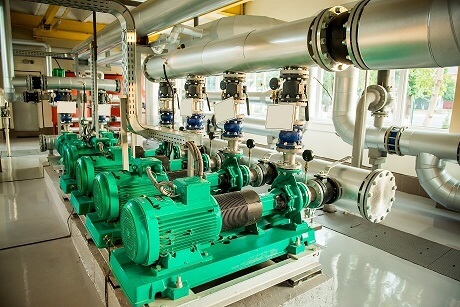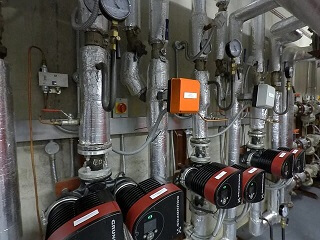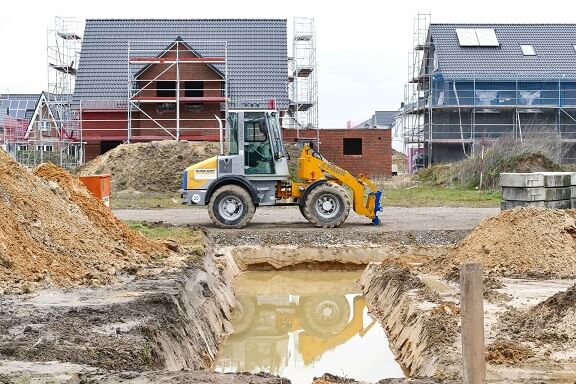Building Services Industry
Pumps are an essential part of any building for ensuring it operates smoothly, is habitable and risks are managed. Pumps are used in many aspects in both domestic and commercial environments from heating buildings, providing drinking water to high rise flats, fire protection and drainage of wastewater and sewage.
There are various pump applications within the building service industry:
HVAC – Heating Ventilation and Air Conditioning
This is where pumps are used to transfer hot & cold water in a closed-loop system for heating and cooling. Such pumps are typically low head and low flow single-stage centrifugal designed to pass water to a boiler or heat exchanger. 
Pressure Booster Pumps
Due to the high demand and high-rise offices and flats in commercial and domestic buildings pressure booster pumps are needed to ensure water reaches each user at sufficient pressure for showering, washing and everyday use. Such pressure boosting equipment is of multistage type generating high heads and low flows. Pressure booster pumps are arranged on a baseplate, connected in parallel with a common manifold on the suction and discharge. They can operate on duty standby where there are redundancy built-in, and duty assists where the load is shared across all pumps.
High rise buildings require a fire main installing with firefighting pumps supplying the required flow and pressure to ensure sprinklers distribute water in a mist to douse flames. Such pumps are multistage or end suction centrifugal with back pull out design to allow maintenance. It is a requirement that they are tested frequently and may have the option of a backup diesel engine. Third-party accreditation and testing may also be required for insurance purposes.
Drainage
Typically domestic properties have sewage taken away by gravity however due to larger and commercial and domestic properties pumps are required to ensure the sewage and wastewater is removed quickly. Such pumps are typically submersible pumps operated via float switches with high-level alarms and in duty assist or duty standby configuration ensuring redundancy is built into the system in case of downtime.
Recovery
Pumps can be used for greywater recovery for reuse elsewhere in the building, for processes such as flushing toilets or irrigation.
Pumps can be configured with various options to ensure users have a trouble-free operation within the building services industry.
Product features include:
Variable speed drive – This allows the pumps to operate at the most efficient point as well as at varying flows and pressures meaning lower and higher demand can be accommodated.
Easy Maintenance – back pull out design, or horizontally / longitudinally split meaning internal parts can be easily replaced. Spacer coupling allows maintenance of pumps without removal of the motor
Duty Standby / Assist – Pumps can initially operate on their own to meet the required load in duty standby but if the required flow and pressure are insufficient a second pump will operate in parallel ensuring the demands can be met. In duty standby, the standby pump may take over or alternate operation with the main pump to ensure there is redundancy within the system.
BMS System integration – Pumps in remote locations or in areas of the building not frequent to inspection should be monitored. A BMS integration system as part of the pump provides feedback into the building management system of how the pump is performing, total running hours when maintenance is due, and if failure has occurred ensuring pumps can be maintained prior to a pump failure occurring.






